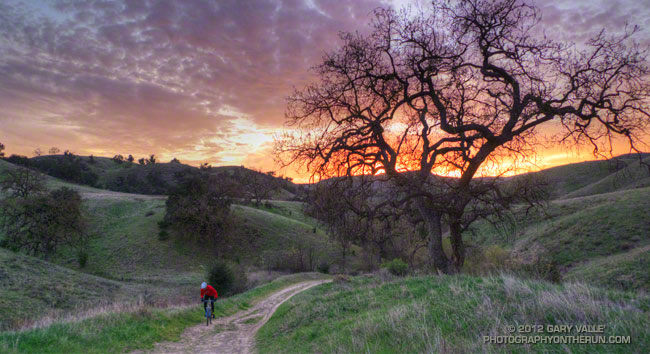
From this evening’s run at Ahmanson Ranch.

From this evening’s run at Ahmanson Ranch.
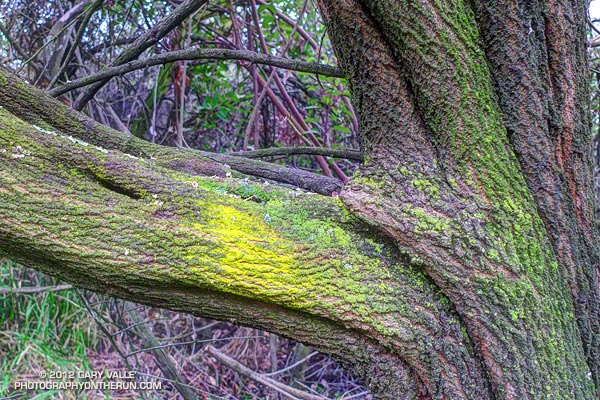
Rain brings out the richness of the chaparral, enlivening its inhabitants, enhancing its colors, and enriching its fragrances. But in recent weeks rain storms have been few and rainfall far below normal.
The 2011-2012 rain season started out well enough. Thanksgiving Day the water year rainfall total for Downtown Los Angeles (USC) was about an inch above normal. But between Thanksgiving and Christmas the drier weather often associated with La Nina conditions became predominant, and water year totals dropped to about normal.
Northern and Central California were actually much drier than would be expected during a La Nina. Mammoth Mountain recorded no new snow between December 5 and January 19 — about a month and a half! Our dry spell was nearly as long. Downtown Los Angeles recorded no measurable rain between December 17 and January 21.
The storms Saturday and Monday added about 1.3 inches of rain, boosting the water year rainfall total to 5.06 inches. As of yesterday this was 1.87 inches below normal and about 73% of the normal total.
The problem is this time of year we fall behind another 0.12 to 0.15 inch every day that it doesn’t rain. The deficit adds up quickly and if — as the medium range models currently project — we don’t get any rain for the next 10 days we’ll down another inch and at about 64% of normal. We’ll see!
The photograph of the Ceanothus trunk is from last Sunday’s Will Rogers – Temescal loop trail run.
Related posts: The Color of Rain II, The Color of Rain
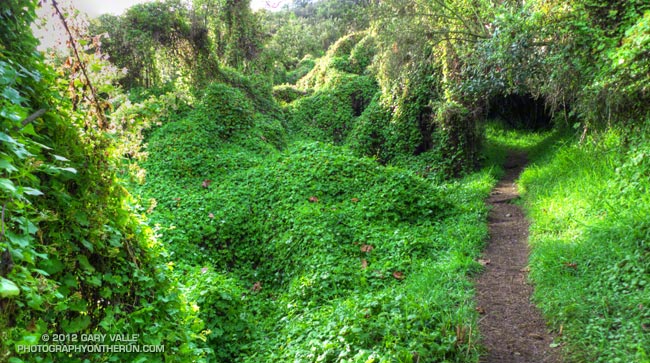
Did the Will Rogers – Temescal Loop this morning from the End of Reseda. It had been more than a month since we’d had measureable rain in Los Angeles and it was great to be out in the Santa Monica Mountains after a rainstorm, dodging a few mud puddles and enjoying the good running weather!
A key segment of the 21 mile loop is the Rivas Canyon Trail, which connects Will Rogers State Historic Park to Temescal Gateway Park. Each time I run the trail I’m blown away by the oceans of Cape ivy in Rivas Canyon. Having grown up in the Southeastern U.S. it reminds me of kudzu.
Both are introduced perennial climbing vines — kudzu from Japan and Cape ivy from South Africa. Both are prolific and can cause severe negative impacts to native plants and other vegetation.
More information about Cape ivy (Delairea odorata) can be obtained on the California Invasive Plant Council web site.
Related post: Christmas Eve Trail Run
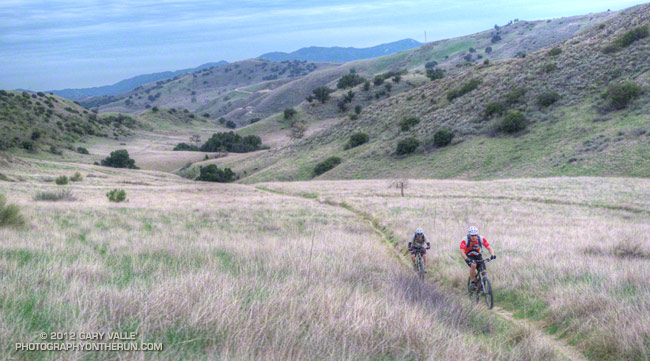
Mountain bikers cranking up a canyon near Las Virgenes Creek.
From today’s run at Ahmanson Ranch.
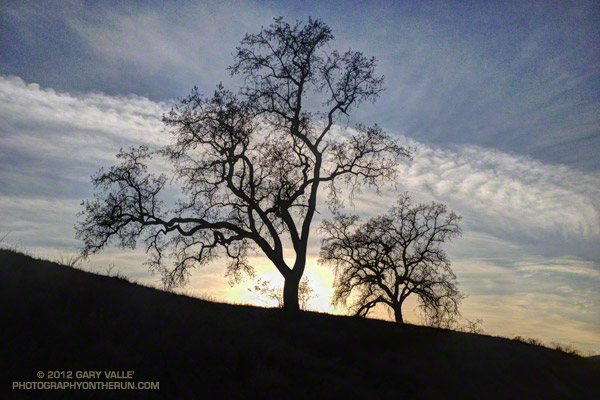
These valley oaks have dropped their leaves, but if you were to go by the warm temperatures we’ve been having in Southern California, you might think it was Summer.
Including today, the high temperature at Pierce College in Woodland Hills, California has reached into the 80s each of the last six days. High temperature records for December 31 – January 5 have been broken at several locations. Among the records broken, yesterday San Gabriel recorded a high of 91, Camarillo 90, and UCLA 89.
It sounds sweltering, and it can be if you’re in full sun, but it’s not like a 90 degree day in July. Days are short, shadows long, and some north-facing slopes never see the sun. And it does cool down quickly. If you take a look at the overnight lows on those six 80+ days at Pierce College, you’ll see the temperature dropped to around 40-42 degrees.
On my run Tuesday afternoon, when the photograph of the valley oaks was taken, the temperature varied by as much as 20-25 degrees between some high and low points.
It has been great weather for running, but I’m ready for a change in the pattern and a little rain!
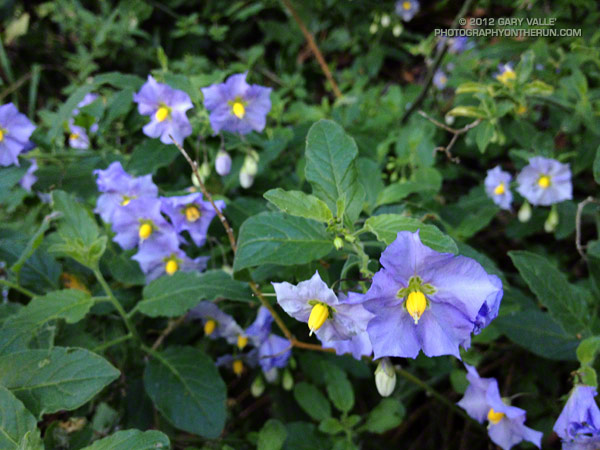
From a New Year’s morning run on the Garapito Trail in the Santa Monica Mountains, near Los Angeles.
Some related posts: Deadly Nightshade, Douglas’ Nightshade